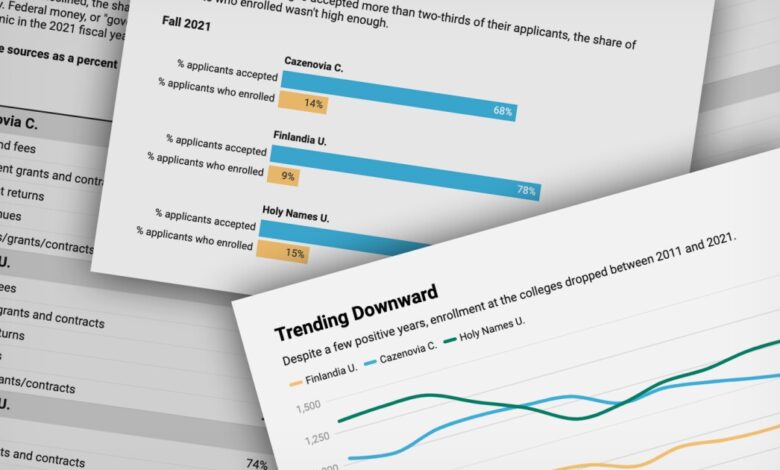These 3 Colleges Are Closing. They Share Some Key Traits.

When Finlandia University announced early this month that it would shut down at the end of the academic year, the reasons the college gave echoed those of other small, less-selective colleges that have also closed.
The Michigan college has struggled to recruit students in one of the many areas of the country where the number of high-school graduates is declining and fewer of those graduates are choosing to go on to college. In addition, as the chair of the Board of Trustees said in a statement, Finlandia is burdened by an “unbearable debt load.”
Deciding not to enroll students for the 2023-24 academic year was a way to allow the 126-year-old college to “end its operations with as much grace and dignity as possible,” the statement said.
Finlandia is one of three small, private nonprofit colleges whose plans to close this year have been made public since December. The class of 2023 will also be the last at Cazenovia College, in Central New York, and Holy Names University, in Oakland.
Cazenovia has grappled with falling enrollment for almost a decade — a trend made worse when the pandemic affected the institution’s recruitment efforts, the college said. When students postponed attending college, the tuition-dependent Cazenovia saw its finances falter.
In announcing the shutdown on its website, Cazenovia said “being a small college without a large endowment has made the college’s challenges formidable.” Federal data shows that Cazenovia had an endowment valued at $4.2 million at the end of the 2021 fiscal year. And that was before the markets tumbled in 2022.
Another factor in Cazenovia’s impending closure: It defaulted on a $25-million bond payment last year. The college wasn’t able to refinance the debt.
An unsustainable debt load, in part, kept Holy Names University from finding a merger partner in an effort to stave off closure. The Board of Trustees at Holy Names said in a statement that the university’s property debt of $49 million, coupled with about $200 million in deferred maintenance costs was “a large undertaking for any college or university.”
The pandemic also made the university’s financial challenges worse and “disproportionately impacted” Holy Names students, many of whom are from under-resourced communities or are first-generation college students.
Here’s a look at some of the key traits the three institutions shared:
Source link






